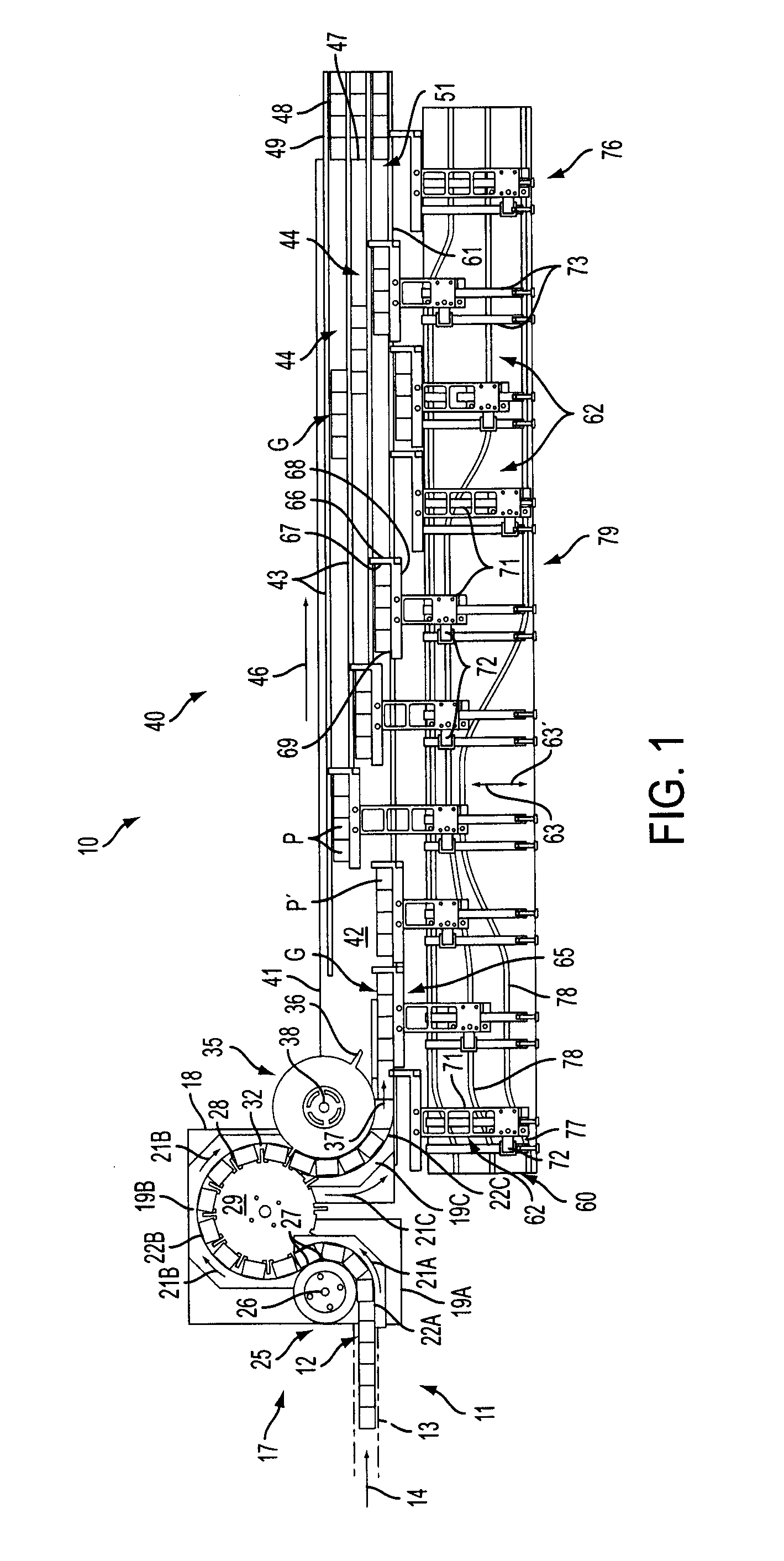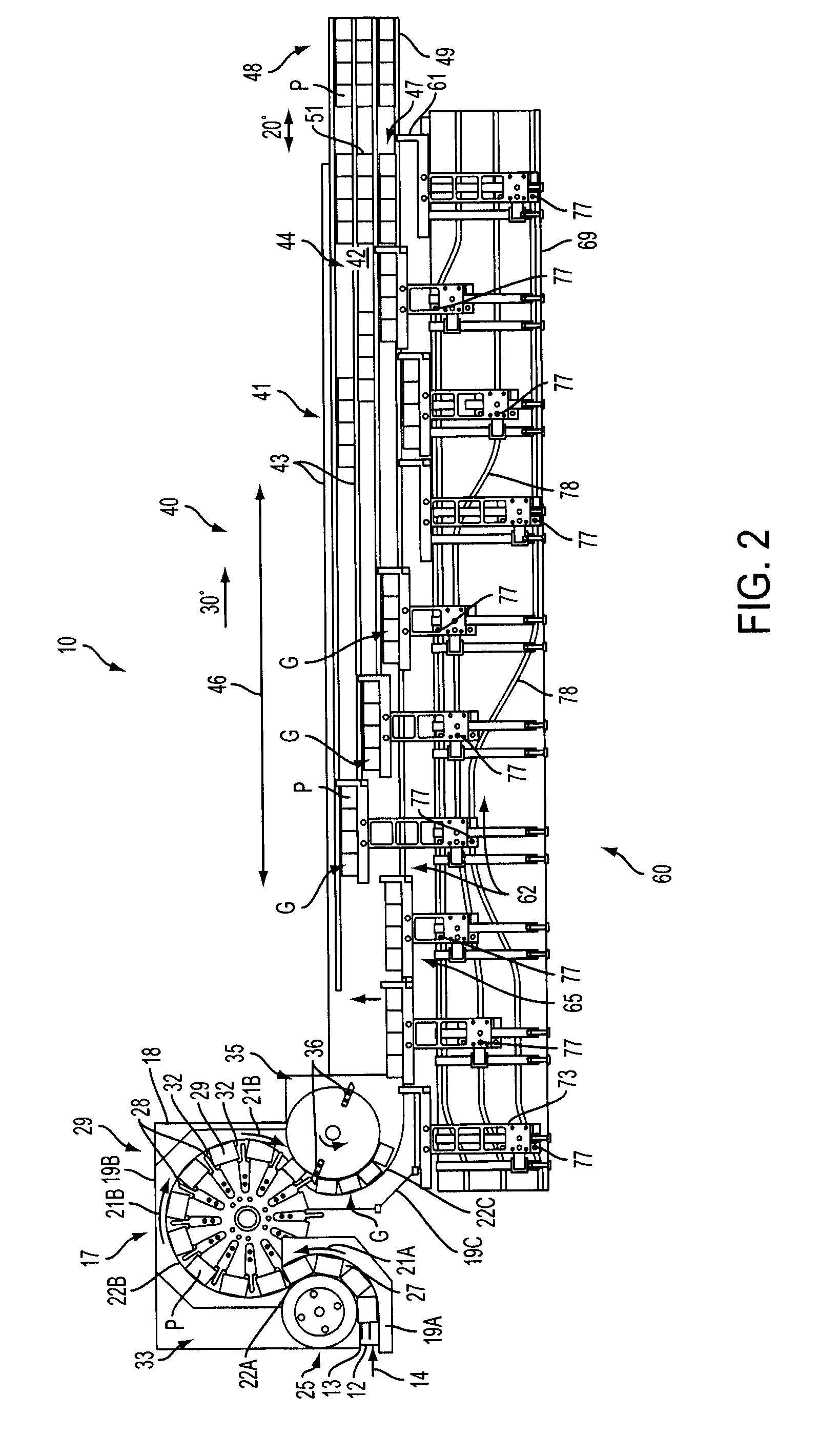Continuous motion product selection and grouping system
a product selection and product technology, applied in the direction of conveyor parts, transportation and packaging, mechanical conveyors, etc., can solve the problems of limiting the production rate of packaging problems with the control of bricks, and the efficient automatic packaging of such aseptic bricks or containers, so as to maintain the stability of product groups and reduce the pressure of the incoming line
- Summary
- Abstract
- Description
- Claims
- Application Information
AI Technical Summary
Benefits of technology
Problems solved by technology
Method used
Image
Examples
Embodiment Construction
[0026]Referring now to the drawings in which like numerals indicate like parts throughout the several views, FIGS. 1-4 illustrate an example embodiment of a product selection and grouping system 10 according to the principles of the present invention. The product selection and grouping system 10 is shown in the figures as being used with substantially square or substantially rectangular shaped products P, although it will be understood by those skilled in the art that various other configurations or product shapes also can be used, including round, cylindrical, or multi-sided products. As one example, the products P can include aseptic bricks, or other, similar products typically formed from a foil, paperboard, or other similar compressible materials, and with such bricks or containers typically having substantially flat side surfaces. The products further can be fed in an end-to-end, abutting relationship from a filling system or machine, such as a form-fill and seal type machine o...
PUM
 Login to View More
Login to View More Abstract
Description
Claims
Application Information
 Login to View More
Login to View More - R&D
- Intellectual Property
- Life Sciences
- Materials
- Tech Scout
- Unparalleled Data Quality
- Higher Quality Content
- 60% Fewer Hallucinations
Browse by: Latest US Patents, China's latest patents, Technical Efficacy Thesaurus, Application Domain, Technology Topic, Popular Technical Reports.
© 2025 PatSnap. All rights reserved.Legal|Privacy policy|Modern Slavery Act Transparency Statement|Sitemap|About US| Contact US: help@patsnap.com



